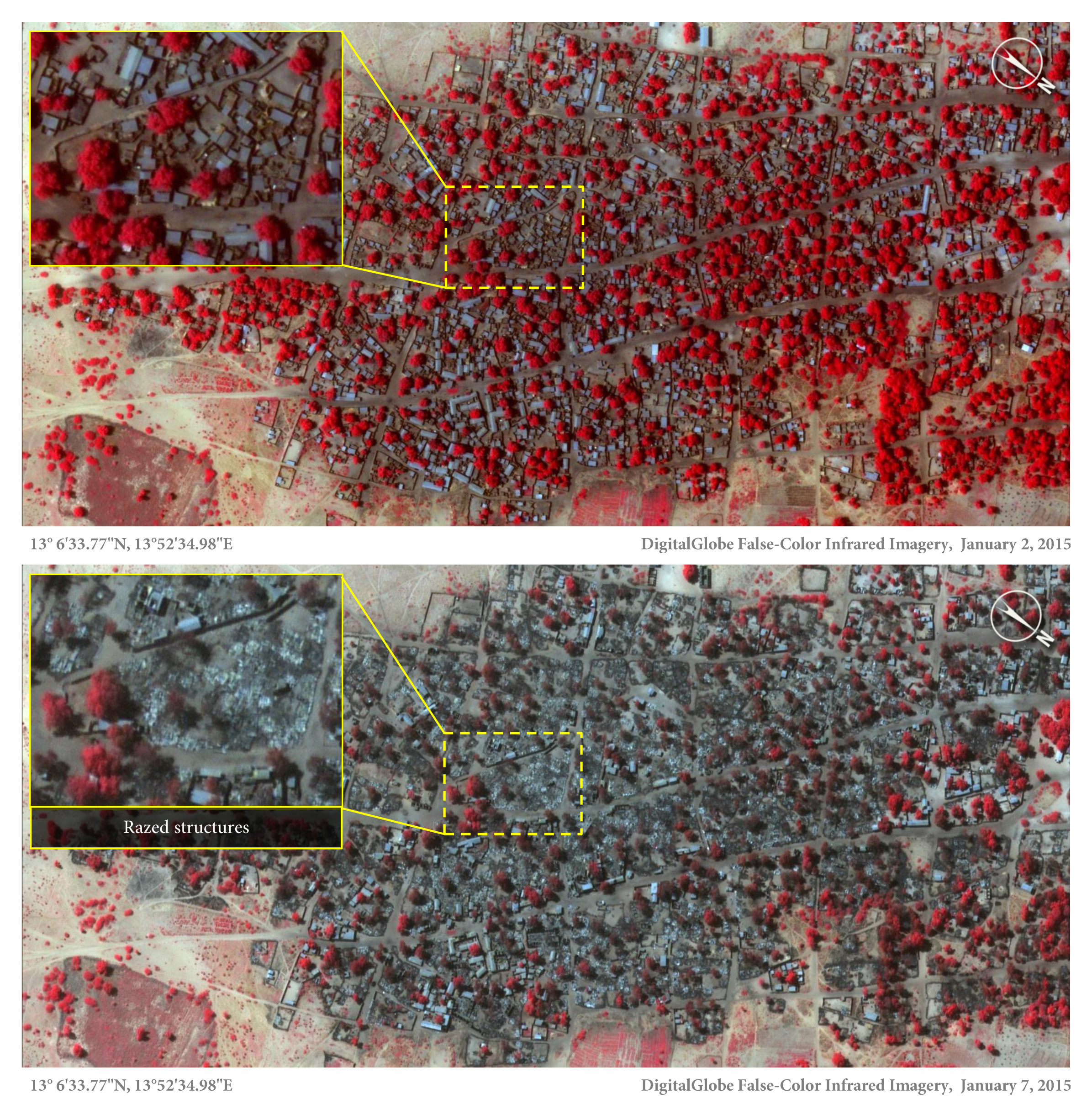Click on image to see full graphic:

Demolished houses in the neigborhood of Chagoua 2 in N'Djamena. Despite a court order to cease the demolitions, the mayor continued with the demolitions. Click on image to see full graphic. © 2009 Digital Globe. All Rights Reserved. Produced by AIUSA.
Authorities in Chad have demolished 3,700 homes and businesses in the capital city N’Djamena, leaving tens of thousands of people homeless. We have exposed the pace of housing demolitions – which can only be described as shocking – in a groundbreaking new research project. Instead of giving up after Chadian officials provided us with inadequate figures last year, we turned to the power of satellite technology to put hard numbers behind the scale of destruction. On the ground research confirmed that many of the housing demolitions were in fact illegal and in violation of both Chadian and international law. But let’s not forget that behind these hard numbers and facts are human beings who are now standing before the rubble of their belongings and livelihoods. As a Chadian women – whose family home was destroyed in the neighborhood of Farcha – pointedly described to us: “We are broken – just like our homes”.
Wave of demolitions in wake of armed attack
The first wave of demolitions immediately followed an armed attack by armed opposition groups on N’Djamena in February 2008. Government forces responded to the attack by bombing the areas from which they believed the opposition forces were attacking. Hundreds of civilians were killed or injured and more than 50,000 fled the capital to seek refuge in neighboring Cameroon. The government of Chad – supported by France – regained control of N’Djaména and opposition forces retreated toward Sudan. On 22 February 2008, Chadian President Idriss Déby himself issued a decree authorizing the destruction of what were called illegally constructed buildings and structures. The first decree applied to two neighborhoods of N’Djamena. However, the destruction was later extended into other residential neighborhoods and houses were still being demolished in late July 2009. Many people remain at risk of being forcibly evicted. Most of the forced evictions have been carried out by the security forces. They order people to leave their properties and bar any residents who are not at home from returning. Some families were evicted by the government in direct contempt of court orders prohibiting their removal. For example, residents in the neighborhood of Chagoua 2 lodged a complaint in court, which ruled that planned demolitions should cease pending a final decision by the court. Despite this order, Mahamat Zène Bada, the mayor of N’Djamena, continued to demolish structures in that neighborhood.

Mme Dibie, aged 75, with neighbors in front of the ruins of her home in Farcha, N'Djamena. She had lived there for more than 42 years and supported herself by selling local beverages. © Amnesty International
Extreme Makeover Needed
Only a clear policy reversal by the Chadian government can stop the pace of housing demolitions in Chad. So far, the government of Chad has evidently failed its legal obligations: It neither consulted with the affected communities, nor provided proper compensation. The Déby government is doing what it wants with its own citizens and continues to kick people out of their homes. I have my doubts that the government will change its policy from one day to the next, and I believe the international community has a clear responsibility to protest the demolitions and forced evictions. Where are France, the US, the UN, the AU and the EU on this issue? If they remain silent on this blatant crime, more homes and lives will be broken in Chad.



